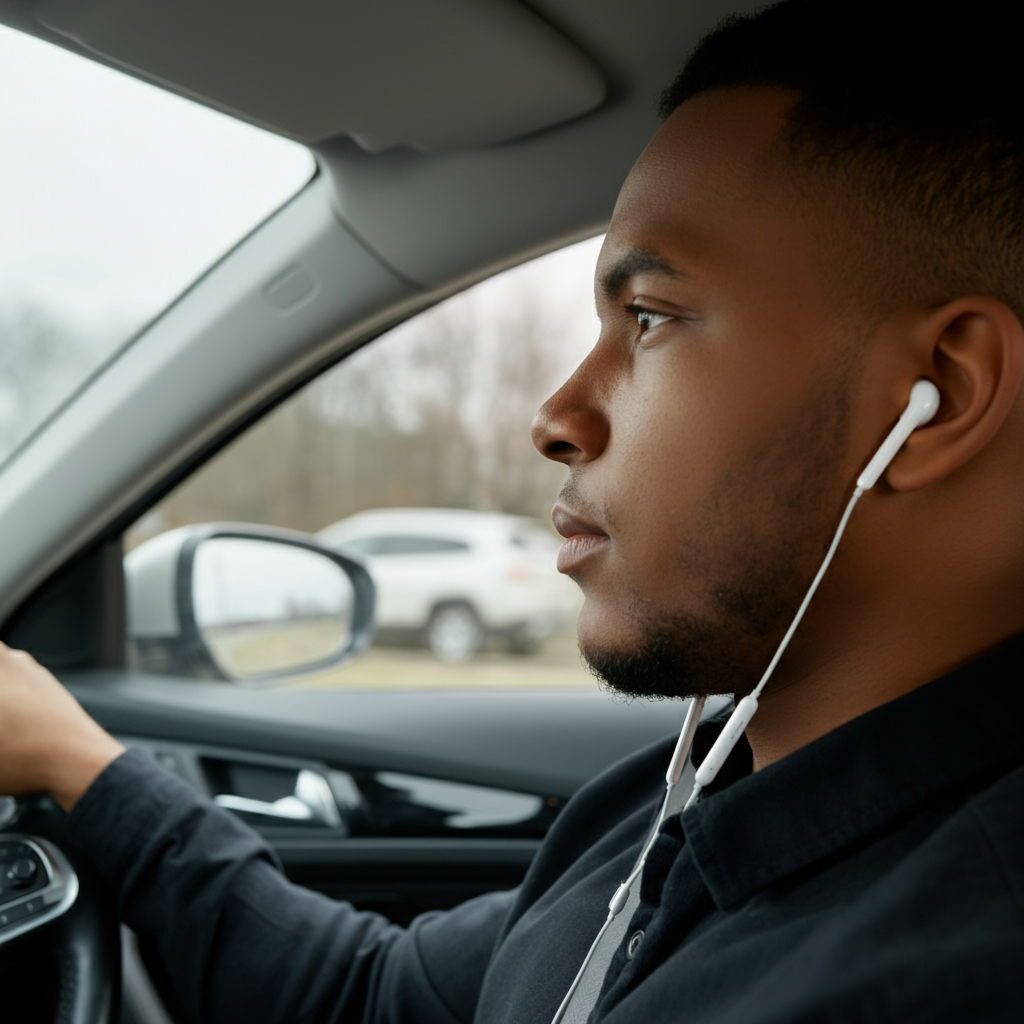Driving is a daily activity for millions of people, and the ability to multitask or personalize the driving experience is tempting. One question that often comes up is whether it’s legal to drive while wearing headphones. Headphones are convenient for enjoying music, podcasts, or even taking calls hands-free. But their use while driving raises concerns about both legality and safety.
This blog explores state-specific laws, the potential safety risks of driving with headphones, exceptions to existing rules, and best practices for safe driving. By the end, you’ll have a clear understanding of how using headphones affects your responsibilities as a driver.
Is Driving with Headphones Illegal? State-by-State Laws
The legality of driving with headphones depends largely on your location. While federal law doesn’t outlaw the practice, individual states have implemented their own rules.
Here’s a summary of state viewpoints on using headphones while driving in the U.S.:
- Illegal in Some States
Certain states prohibit wearing headphones or earbuds while driving. These include, but are not limited to, California, Maryland, and Louisiana. Violating this law in these states could lead to fines or other penalties.
- Partially Restricted States
Some states allow headphone use with limitations. For instance, Florida prohibits the use of headphones by drivers unless a single ear is left uncovered for ambient sound awareness.
- Permitted States
A few states, like Colorado, do not have specific laws against wearing headphones while driving.
It’s crucial to note that laws often change, so checking the latest local regulations is always advisable.
Safety Concerns and Risks of Driving with Headphones
Even in areas where wearing headphones is legal, it doesn’t mean it’s safe. Here are the primary safety concerns associated with wearing headphones behind the wheel:
Impaired Hearing
Headphones can block external sounds, including crucial auditory signals like sirens, car horns, or screeching brakes. Missing these cues can delay reaction times during emergencies.
Increased Distractions
Listening to loud music, engaging audio, or spoken content on headphones can divert your focus from the road. This distraction increases the likelihood of accidents.
Limited Situational Awareness
Driving requires situational awareness at all times. Wearing headphones diminishes your ability to process your surroundings fully, including detecting hazards that rely on auditory signals.
Studies by the National Highway Traffic Safety Administration (NHTSA) consistently show that distracted driving is one of the leading causes of traffic accidents.
Exceptions to Headphone Use Regulations
While the use of headphones is restricted in many states, there are a few exceptions to these rules.
Hearing Aids and Assistive Devices
Drivers who use hearing aids or similar assistive devices are generally exempt from headphone laws. These devices are essential for hearing-impaired individuals to interact with their environment and drive safely.
Commercial Vehicles
Some jurisdictions may provide exceptions for commercial drivers who use specialized communication headsets for work-related tasks, such as two-way radios.
Emergencies
Using headphones in certain emergencies, such as listening to GPS navigation, critical to your route, may be overlooked. However, these instances are subject to interpretation and are not blanket exemptions.
Best Practices to Stay Safe
If you find yourself needing to use headphones while driving or want alternatives, here are some best practices to consider:
Stick to Hands-Free Technology
Invest in a car’s built-in Bluetooth system or a hands-free device to make calls or listen to audio content without compromising safety.
Use a Single Earbud
If headphones are essential, use only one earbud. This keeps one ear free to perceive external sounds.
Adjust Volume Levels
Ensure that your audio volume is low enough to hear what’s happening around you, including warnings from other vehicles.
Opt for Ambient Noise Systems
Some modern cars are equipped with sound systems that allow you to enjoy audio without cutting you off from your surroundings. Explore these options for a safer listening experience.
Prioritize the Road
Remember, no piece of music, podcast, or phone call is worth putting yourself or others at risk. If audio content becomes too distracting, pause it and focus fully on driving.
Drive Safe, Drive Smart
Driving with headphones might seem harmless, but it’s critical to consider both the legality and the increased safety risks. Knowing your state’s laws, recognizing potential dangers, and choosing safer alternatives can make a significant difference in ensuring everyone’s well-being on the road.
Next time you reach for your headphones before getting behind the wheel, take a moment to ask yourself if it’s truly worth the risk. Using hands-free technology or ditching the headphones altogether could prevent an accident and quite possibly save a life.
Safe driving practices aren’t just a good idea; they’re a responsibility.



